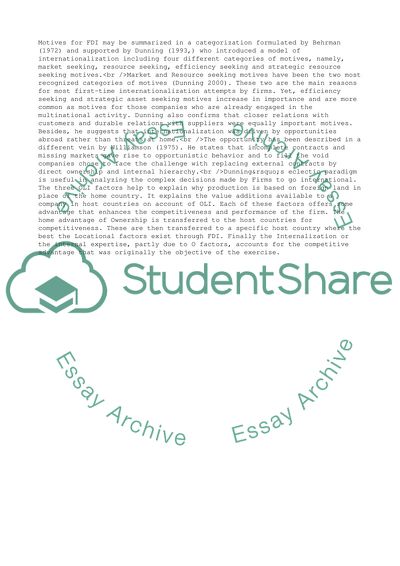Cite this document
(Dunning Paradigm for Investment Evaluation Case Study Example | Topics and Well Written Essays - 1500 words, n.d.)
Dunning Paradigm for Investment Evaluation Case Study Example | Topics and Well Written Essays - 1500 words. https://studentshare.org/management/1544927-explain-each-element-of-the-dunnings-oli-paradigm-give-examples-for-each-of-the-oli-elements-for-market-seeking-and-resource-seeking-types-of-investment-6-in
Dunning Paradigm for Investment Evaluation Case Study Example | Topics and Well Written Essays - 1500 words. https://studentshare.org/management/1544927-explain-each-element-of-the-dunnings-oli-paradigm-give-examples-for-each-of-the-oli-elements-for-market-seeking-and-resource-seeking-types-of-investment-6-in
(Dunning Paradigm for Investment Evaluation Case Study Example | Topics and Well Written Essays - 1500 Words)
Dunning Paradigm for Investment Evaluation Case Study Example | Topics and Well Written Essays - 1500 Words. https://studentshare.org/management/1544927-explain-each-element-of-the-dunnings-oli-paradigm-give-examples-for-each-of-the-oli-elements-for-market-seeking-and-resource-seeking-types-of-investment-6-in.
Dunning Paradigm for Investment Evaluation Case Study Example | Topics and Well Written Essays - 1500 Words. https://studentshare.org/management/1544927-explain-each-element-of-the-dunnings-oli-paradigm-give-examples-for-each-of-the-oli-elements-for-market-seeking-and-resource-seeking-types-of-investment-6-in.
“Dunning Paradigm for Investment Evaluation Case Study Example | Topics and Well Written Essays - 1500 Words”. https://studentshare.org/management/1544927-explain-each-element-of-the-dunnings-oli-paradigm-give-examples-for-each-of-the-oli-elements-for-market-seeking-and-resource-seeking-types-of-investment-6-in.


